Ubon Ratchathani
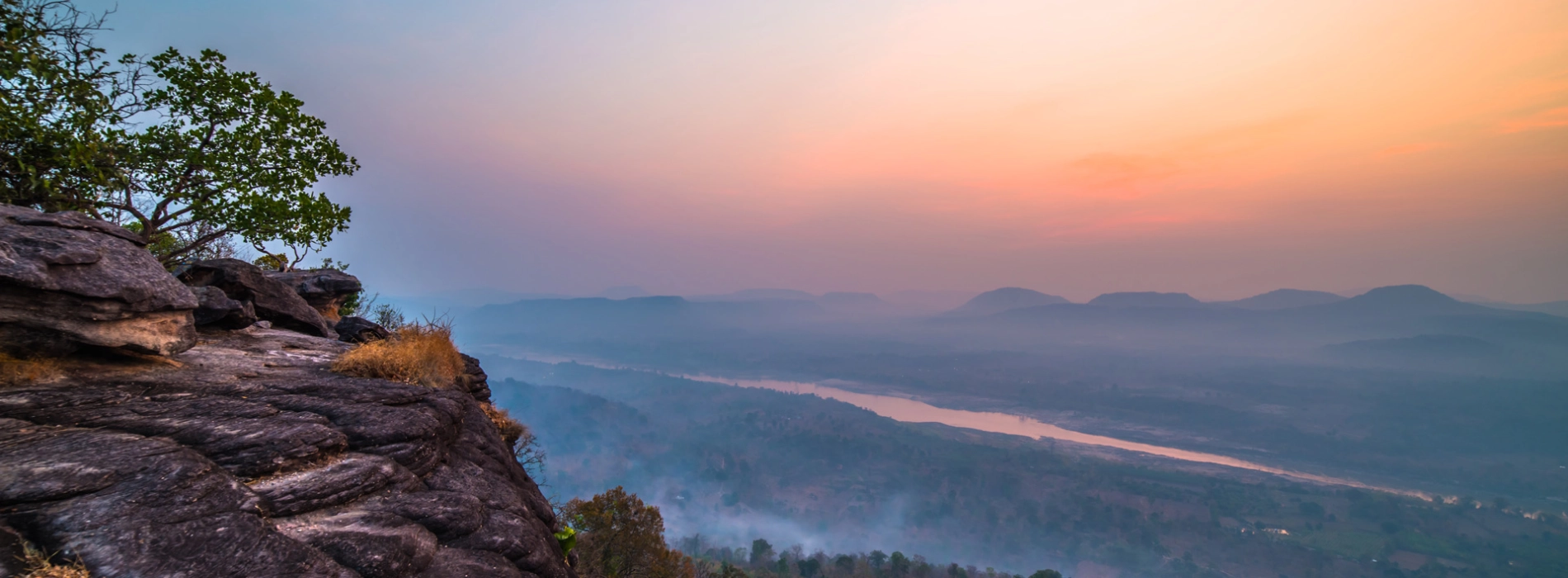
Nestled in the northeastern region of Thailand, Ubon Ratchathani emerges as a province steeped in cultural vibrancy, historical significance, and natural beauty. The province, with its eponymous capital city, captivates visitors with a rich tapestry of traditions, including the renowned Candle Festival that illuminates the streets in July.
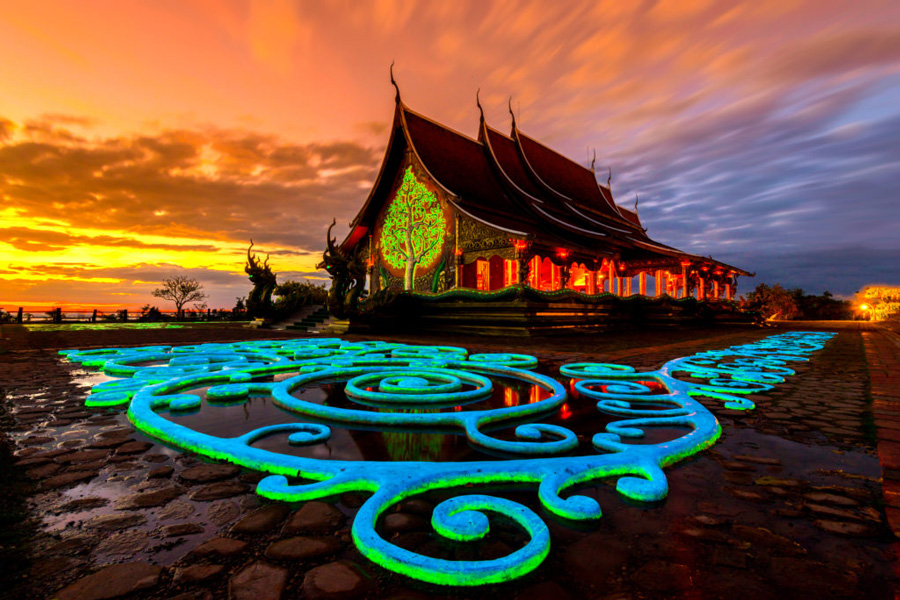 Beautiful Night Of Glowing Trees At Wat Sirintornwararam
Beautiful Night Of Glowing Trees At Wat Sirintornwararam
Home to the majestic Wat Thung Si Muang and the breathtaking landscapes of Pha Taem National Park, Ubon Ratchathani invites exploration of both its spiritual and natural wonders. Beyond its cultural allure, the province boasts a thriving silk industry, weaving intricate stories into its fabric. As one delves into the local cuisine, the flavors of Isaan unfold, offering a spicy and tantalizing journey through unique culinary traditions. Ubon Ratchathani stands as a testament to the captivating blend of tradition, history, and natural splendor that defines the northeastern landscapes of Thailand.
Ubon Ratchathani, unfolds a tapestry of history that spans millennia, echoing the whispers of ancient civilizations and resonating with the dynamic forces that shaped its cultural landscape. The rock paintings in Pha Taem National Park, dating back thousands of years, serve as silent witnesses to the early societies that once inhabited this region, offering glimpses into their artistry and way of life. The imprint of the Khmer Empire, during the Angkor period, is evident in the architectural marvels scattered across Ubon Ratchathani, revealing the grandeur and influence of this powerful kingdom. Subsequently, as part of the Lan Xang Kingdom, the province became a melting pot of cultural diversity, absorbing influences from neighboring realms.
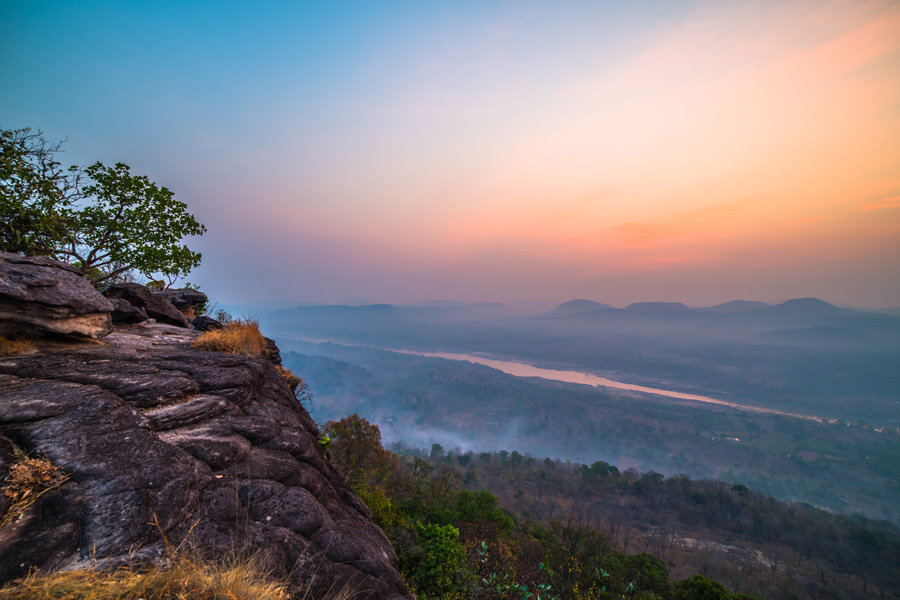 Pha Chana Dai Park
Pha Chana Dai Park
The province's narrative weaves seamlessly into the broader historical fabric of Thailand, with Ubon Ratchathani playing a pivotal role during the Ayutthaya and Bangkok Kingdoms. Its strategic location and economic contributions made it a vital hub for trade and governance. The 20th century ushered in a new chapter as the province became a significant player in the geopolitical stage during the Vietnam War, hosting a United States Air Force base that brought about unprecedented changes in infrastructure and modernization.
Yet, amidst the waves of historical transitions, Ubon Ratchathani has retained its cultural distinctiveness. Temples such as Wat Thung Si Muang stand as architectural testaments to the enduring spiritual legacy of the region. Traditional festivals, including the renowned Candle Festival, continue to illuminate the streets with a vibrant display of art and spirituality.
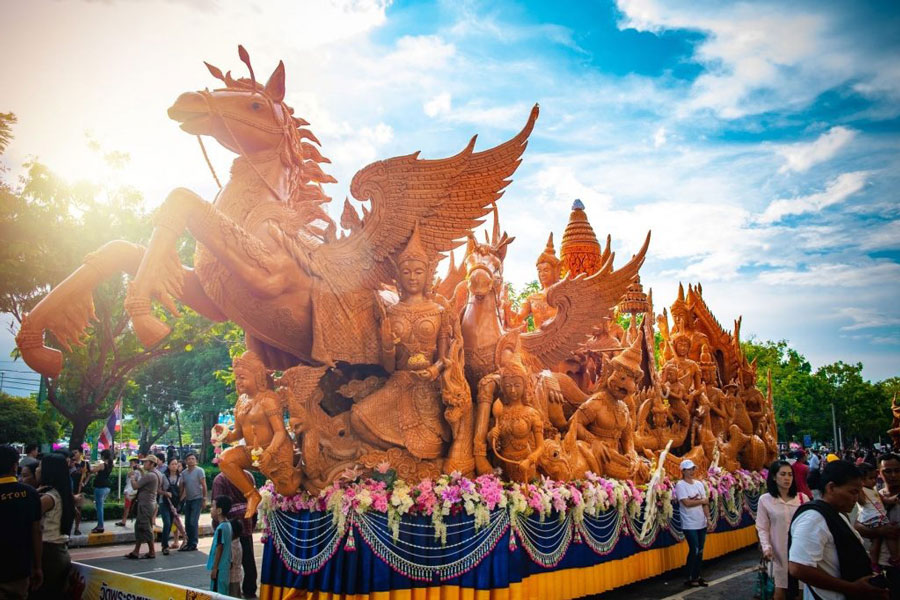 Candle Festival
Candle Festival
Today, Ubon Ratchathani stands at the crossroads of tradition and modernity, with its ancient temples, traditional silk production, and culinary delights coexisting harmoniously with contemporary developments. The province's journey through time is not merely a historical account but a testament to the resilience of its people and the seamless fusion of the old and the new. Exploring Ubon Ratchathani is an immersive experience, a journey through the ages where the layers of history unfold, revealing the depth and richness of this captivating province.
You may also like: The BEST Bangkok Exploring floating markets 2024
The best time to visit Ubon Ratchathani depends on your preferences and the type of experience you're seeking. Ubon Ratchathani experiences a tropical climate with distinct wet and dry seasons. Here are the main considerations for each season:
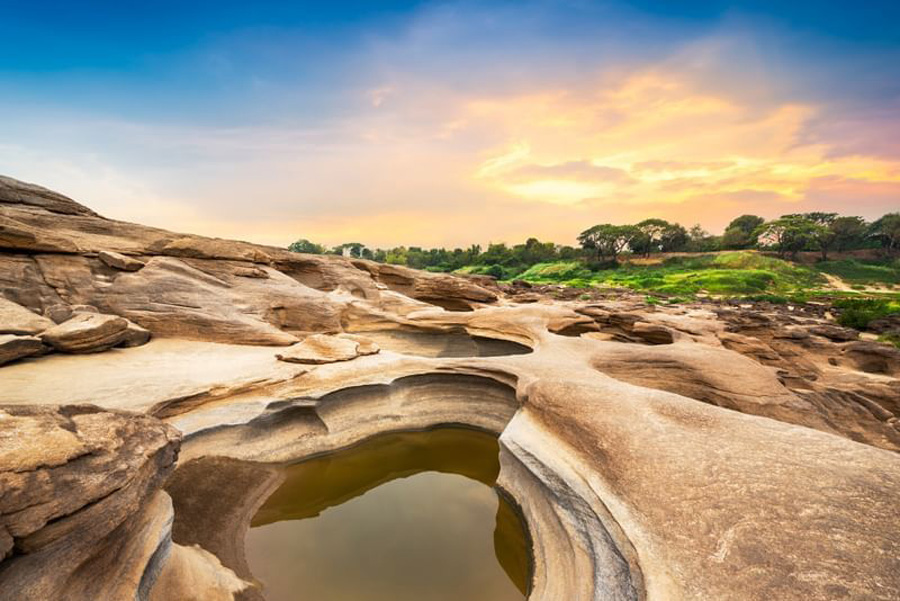 Grand canyon of Thailand (Sam Phan Bok) at Ubon Ratchathani, Thailand
Grand canyon of Thailand (Sam Phan Bok) at Ubon Ratchathani, Thailand
1. Cool and Dry Season (November to February):
- This period is generally considered the best time to visit due to cooler temperatures and lower humidity.
- The weather is more comfortable for outdoor activities and exploration.
- Traditional festivals, such as Loy Krathong in November, offer cultural experiences.
2. Hot Season (March to May):
- This season is characterized by high temperatures, and it can be quite hot and dry.
- If you can tolerate the heat, it's still a viable time for outdoor activities.
- Be prepared for warm temperatures and stay hydrated.
3. Rainy Season (June to October):
- The rainy season brings higher humidity and frequent rainfall.
- While the countryside becomes lush and green, outdoor activities may be affected by rain.
- The region can experience heavy downpours, particularly in August and September.
4. Candle Festival (July):
- If you're interested in cultural events, the Candle Festival in July is a significant celebration in Ubon Ratchathani.
- Elaborately carved candles are showcased in a grand parade, adding a unique cultural experience to your visit.
Ubon Ratchathani, with its diverse cultural offerings and historical charm, is easily accessible through various transportation modes. For air travelers, Ubon Ratchathani International Airport serves as a gateway, offering direct flights from Bangkok and other major cities. Travelers seeking an overland adventure can opt for buses departing from the Northern Bus Terminal (Mo Chit) or the Eastern Bus Terminal (Ekkamai) in Bangkok. The scenic train journey from Hua Lamphong Railway Station in Bangkok to Ubon Ratchathani provides an alternative, allowing passengers to enjoy the picturesque landscapes of the Thai countryside. Those preferring a more flexible and independent journey may consider renting a car and driving along the highway from Bangkok. Additionally, vans and tourist buses offer efficient transportation options, providing varying levels of comfort for the approximately 8-10 hour journey. Whether arriving by air, train, bus, or personal vehicle, Ubon Ratchathani welcomes travelers with its rich cultural heritage and natural wonders.
You may also like: Visiting These 7 Night Markets in Bangkok Is A Must